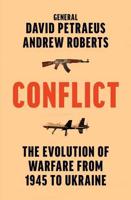Publisher's Synopsis
*Includes pictures
*Includes contemporary records
*Includes online resources and a bibliography for further reading
"There were, I suppose, three possible courses: to let the atrocities which had been committed go unpunished; to put the perpetrators to death or punish them by executive action; or to try them. Which was it to be? Was it possible to let such atrocities go unpunished? Could France, could Russia, could Holland, Belgium, Norway, Czechoslovakia, Poland or Yugoslavia be expected to consent to such a course? ... It will be remembered that after the first world war alleged criminals were handed over to be tried by Germany, and what a farce that was! The majority got off and such sentences as were inflicted were derisory and were soon remitted." - Baron Geoffrey Lawrence, December 1946
At the end of World War II, the world was faced with some sobering statistics. With over 50,000,000 deaths when both military and civilian losses had been accounted for, the death toll was devastating, and for many of those who lived in countries that had been ravaged by war, hunger and financial strain had become parts of daily life. Furthermore, beyond the physical damage was the growing knowledge of the atrocities that had been committed both before and during the war. In fact, the Allies were discussing how to dole out justice for Axis war crimes as early as 1943, and once the war was over, the victorious Allies sought to address every aspect of it to both punish war criminals and attempt to ensure that there was never a conflict like it again.
The judgment of the German leadership and its role in the death, destruction, and demoralization they had brought to the world would take place at Nuremberg. The Nuremberg Trials were a series of 13 proceedings held under the authority of the International Military Tribunal between November 1945 and June 1948, but the trial most associated with Nuremberg is the first trial, in which eight judges appointed by Britain, the United States, the Soviet Union, and France deliberated over the guilt or innocence of 22 men identified as significant leaders of the Nazi cause. This trial took place between November 20, 1945 and August 31, 1946. Later trials included other Germans who held what were considered to be position of power- doctors, businessman, or lower-level functionaries whose positions of influence gave them, in the eyes of the Allies, increased responsibility for their actions. Though almost every person convicted in the 13 Nuremberg Trials was male, there was also a female physician convicted at the doctors' trial.
Though they are now mostly forgotten, the International Military Tribunal for the Far East was the Pacific Theater's equivalent. Known as the Tokyo Trials, 11 countries contributed prosecutors as 28 Japanese faced trials for crimes against humanity. The trials were politically charged from the start, considering the end of World War II, the beginning of the Cold War, and the American occupation of Japan, and in many respects, the Tokyo Trials were part of a new era in American-Japanese relations.
The Tokyo War Crimes Tribunal: The History and Legacy of the War Crimes Trials against Japan after World War II chronicles the history of the trials from their conception to their completion. Along with pictures of important people, places, and events, you will learn about the trials like never before.









